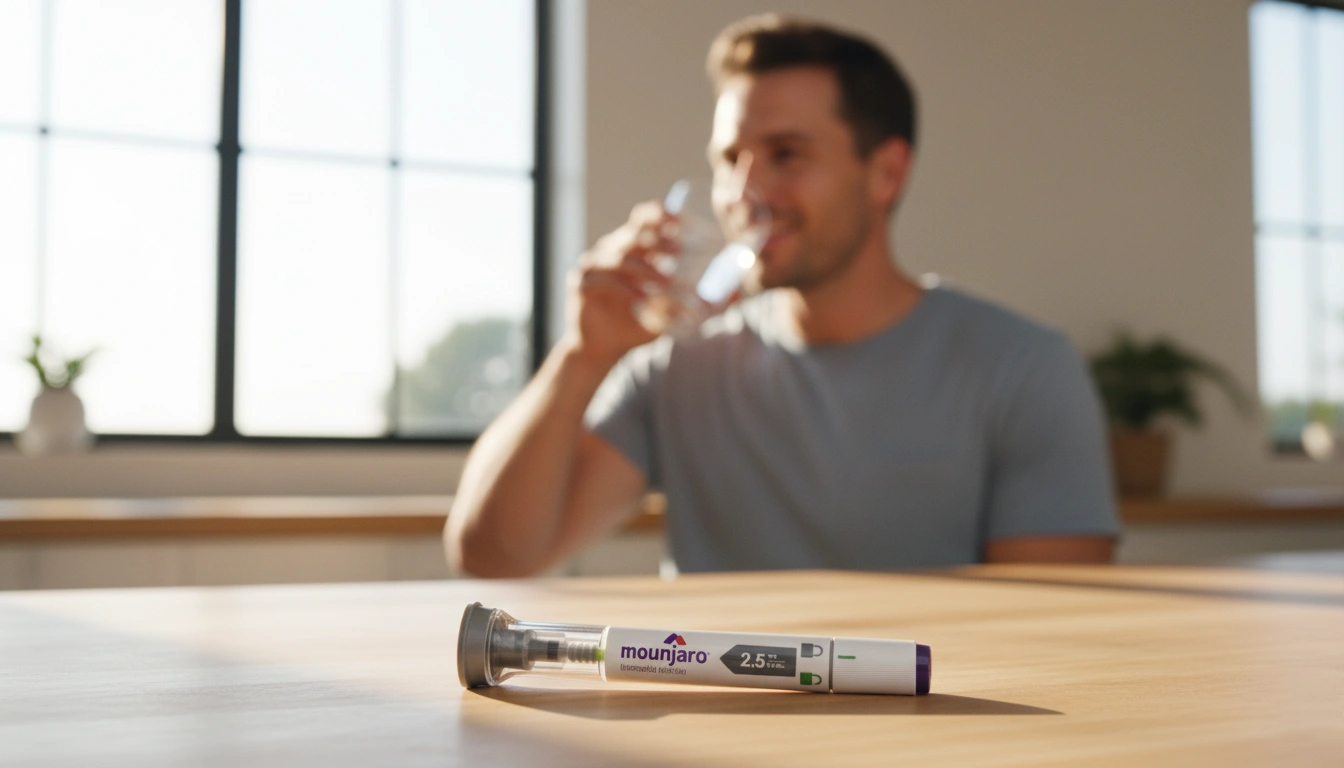Does Mounjaro Need to Be Refrigerated? Essential Storage Tips for Your Medication

Are you aware that improperly storing medications can compromise their effectiveness? Mounjaro, an injectable medication used primarily to manage blood sugar levels in adults with type 2 diabetes, is no exception. Understanding how to properly store Mounjaro is crucial, especially since it can affect your treatment outcomes.
In this blog post, we will delve into the specifics of how Mounjaro should be stored, why refrigeration is important, and what to do if you find yourself in situations where refrigeration isn’t feasible. As we explore this topic, we will provide you with essential insights to ensure that you are equipped with the knowledge necessary for safe and effective use of Mounjaro. By the end of this article, you will have a comprehensive understanding of Mounjaro storage guidelines and the implications of improper handling.
Let's navigate through the essential aspects of Mounjaro storage together, as we emphasize the importance of following the manufacturer’s recommendations for handling this medication, keeping in mind our commitment to patient safety and effective weight management solutions here at TrimRx.
Introduction
Mounjaro, known generically as tirzepatide, has gained attention not only for its effectiveness in managing blood sugar levels but also for its innovative delivery method via injection pens. This convenience brings with it the responsibility of ensuring proper storage for optimal results. The storage recommendations for Mounjaro are clear: it should primarily be refrigerated, but it is also important to understand the exceptions to this rule.
With the rise of telehealth and personalized weight management solutions, understanding the nuances of medication storage has become vital. At TrimRx, our mission is to empower individuals to embrace healthier lifestyles through scientifically backed solutions. We believe that knowledge is a key component of effective health management, and this blog post aims to provide you with the crucial information you need regarding the storage of Mounjaro.
By the end of our discussion, you will know how to store Mounjaro safely, recognize the signs of degradation, and understand the importance of adhering to these guidelines for maintaining the medication's efficacy.
What is Mounjaro?
Before we dive into storage recommendations, let's briefly discuss what Mounjaro is and how it functions. Mounjaro is a prescription medication that is administered via subcutaneous injection. It is designed to improve blood sugar control in adults with type 2 diabetes, and its unique formulation contains the active ingredient tirzepatide, which mimics the effects of hormones that regulate blood sugar levels.
Mounjaro is typically used in conjunction with diet and exercise, and it has shown promising results in clinical studies. However, the effectiveness of this medication can be significantly impacted by improper storage, making it essential to follow the recommended guidelines.
How Mounjaro Works
Mounjaro works by stimulating insulin secretion in response to high blood sugar levels, reducing the amount of sugar produced by the liver, and slowing down gastric emptying. This multifaceted approach not only helps in managing diabetes but can also support weight loss, making it an appealing option for individuals with weight-related health challenges.
Given its role in diabetes management and potential weight loss support, understanding how to store Mounjaro correctly is crucial for ensuring that you receive the full benefits of this treatment.
Storage Guidelines for Mounjaro
Recommended Storage Conditions
Mounjaro should be stored in the refrigerator at a temperature between 36°F and 46°F (2°C and 8°C). This temperature range is critical for maintaining the stability and efficacy of the medication. When stored properly, Mounjaro can remain effective until its expiration date, which is typically 24 months from the date of manufacture when kept under the recommended conditions.
Room Temperature Storage
In certain situations, Mounjaro can also be stored at room temperature, but with specific limitations. It is safe to keep Mounjaro at room temperature of up to 86°F (30°C) for a maximum of 21 days. After this period, any unused medication should be discarded, even if it has been placed back in the refrigerator.
This flexibility is particularly useful for individuals who travel frequently or may not have immediate access to refrigeration. However, it’s essential to monitor the time closely and adhere to these guidelines to prevent any loss of effectiveness.
Avoiding Freezing
It is crucial to note that Mounjaro should never be frozen. If the medication has been frozen, it should not be used, as freezing can alter its chemical composition and render it ineffective. Always check your Mounjaro pen or vial to ensure it has not been exposed to freezing temperatures prior to use.
Protecting from Light
Mounjaro should also be kept in its original packaging until use. This helps protect it from light exposure, which can degrade the medication. Keeping your pens in their cartons not only safeguards them against light but also helps you keep track of expiration dates and other important information.
Practical Tips for Storing Mounjaro
While the guidelines for storing Mounjaro are clear, there are practical steps you can take to ensure that your medication remains effective:
- Keep It Cool: If you are traveling, consider using an insulated cooler or medical-grade cooling pack to maintain the appropriate temperature for your Mounjaro pens. This is especially important during long journeys.
- Avoid Extreme Temperatures: Be mindful of where you store your medication. Avoid leaving Mounjaro in a car, trunk, or bathroom where temperatures can fluctuate dramatically.
- Check Expiration Dates: Before administering Mounjaro, always check the expiration date on your pen or vial. If it has expired, dispose of it safely and consult your healthcare provider for a refill.
- Use a Sharps Container: After using your Mounjaro pen, dispose of it in an FDA-approved sharps container to prevent accidental needle stick injuries. These containers can often be obtained for free from pharmacies or other healthcare providers.
What Happens If Mounjaro Is Not Stored Properly?
Improper storage of Mounjaro can lead to several issues, primarily related to its effectiveness. If Mounjaro is left unrefrigerated for more than 21 days, it may begin to deteriorate, losing its potency and potentially leading to ineffective treatment outcomes. Similarly, exposure to freezing temperatures or light can compromise the medication's integrity.
Recognizing Signs of Degradation
While it may not always be visually apparent if Mounjaro has degraded, there are some signs to watch for:
- Changes in Appearance: If the solution appears cloudy, discolored, or contains visible particles, do not use it.
- Unusual Reactions: If you experience unexpected side effects or reduced effectiveness after using Mounjaro, consult your healthcare provider immediately.
Implications for Treatment
Using degraded or ineffective medication can have serious health implications, particularly for individuals relying on Mounjaro for managing their diabetes. An inability to effectively control blood sugar levels can lead to complications, emphasizing the need for proper storage practices.
Traveling with Mounjaro
Traveling doesn’t have to mean leaving your medication behind. Here are some tips for safely traveling with Mounjaro:
- Carry-On Luggage: Always pack Mounjaro in your carry-on luggage rather than checked baggage. This allows you to maintain control over the temperature and prevents the risk of losing your medication.
- Inform Security Personnel: When going through airport security, inform the personnel that you are carrying medication and keep it in its original packaging for easy identification.
- Use Cooling Packs: If you are traveling for an extended period, consider using cooling packs to keep Mounjaro within the recommended temperature range.
Conclusion
In summary, proper storage of Mounjaro is crucial for ensuring its efficacy and your overall health management. By following the guidelines of keeping Mounjaro refrigerated or at room temperature for limited periods, you can take an essential step in managing your diabetes effectively.
Our journey at TrimRx is to support you in achieving your health goals through informed choices and personalized solutions. Whether you are using Mounjaro to manage your diabetes or are interested in exploring our personalized weight loss programs, we are here to assist you every step of the way.
If you have not yet explored your options, we encourage you to take our free assessment quiz to determine your eligibility for personalized weight loss programs. Additionally, our quick-access supplements, such as the GLP-1 Daily Support and Weight Loss Boost, can provide additional support in your health journey.
FAQ
How long can I store Mounjaro at room temperature?
Mounjaro can be stored at room temperature for up to 21 days, as long as the temperature does not exceed 86°F (30°C).
What should I do if Mounjaro has been frozen?
If Mounjaro has been frozen, it should not be used. Dispose of it safely and consult your healthcare provider for a replacement.
Can I use Mounjaro after the expiration date?
Using Mounjaro after its expiration date is not recommended, as it may not be safe or effective. Always check the expiration date before use.
What are the risks of improper storage?
Improper storage can lead to degradation of the medication, resulting in decreased effectiveness and potential health complications related to uncontrolled blood sugar levels.
How should I dispose of used Mounjaro pens?
Used Mounjaro pens should be disposed of in an FDA-approved sharps disposal container to ensure safety and prevent accidental needle sticks.
By adhering to these guidelines and recommendations, you can ensure that your experience with Mounjaro is safe and effective. Remember, managing your health is a partnership, and together, we'll navigate this journey toward better health.

Transforming Lives, One Step at a Time
Keep reading
Optimizing Your Diet with Mounjaro: Can I Eat Sweet Potato for Sustainable Weight Loss?
Can I eat sweet potato on Mounjaro? Discover how to safely include sweet potatoes in your diet while on Mounjaro for weight loss. Get expert tips!
Maximizing Your Mounjaro Journey: What Foods Should You Eat for Optimal Results and Lasting Wellness
Maximize Mounjaro’s benefits by knowing what foods you should eat. Discover key dietary choices to enhance weight loss, manage side effects, and optimize your health journey.
Eating on Mounjaro: A Holistic Guide to Fueling Your Weight Loss and Health Journey
Can you eat on Mounjaro? Discover optimal dietary choices to maximize Mounjaro’s benefits, manage side effects, and achieve sustainable weight loss. Get expert tips!



